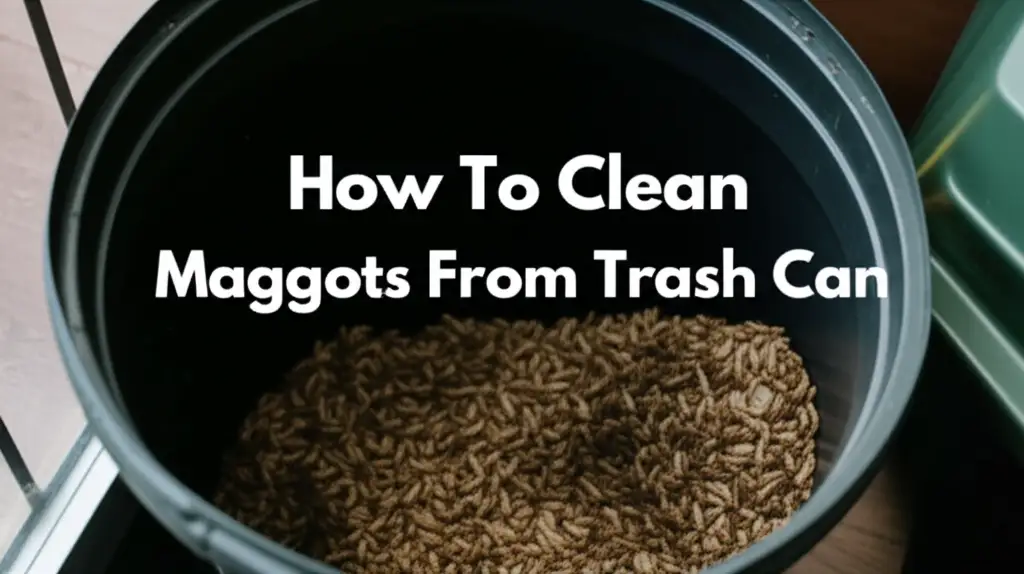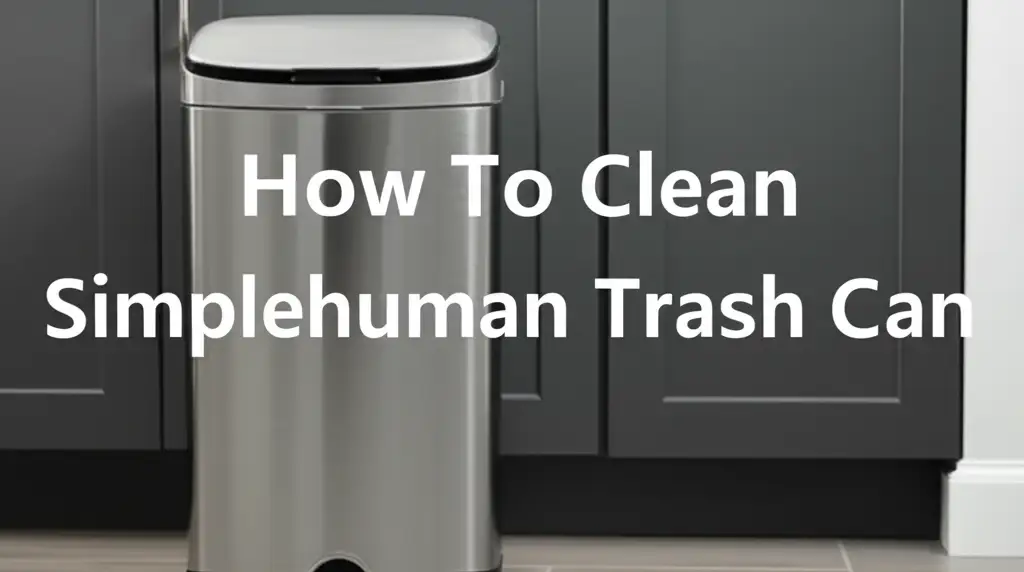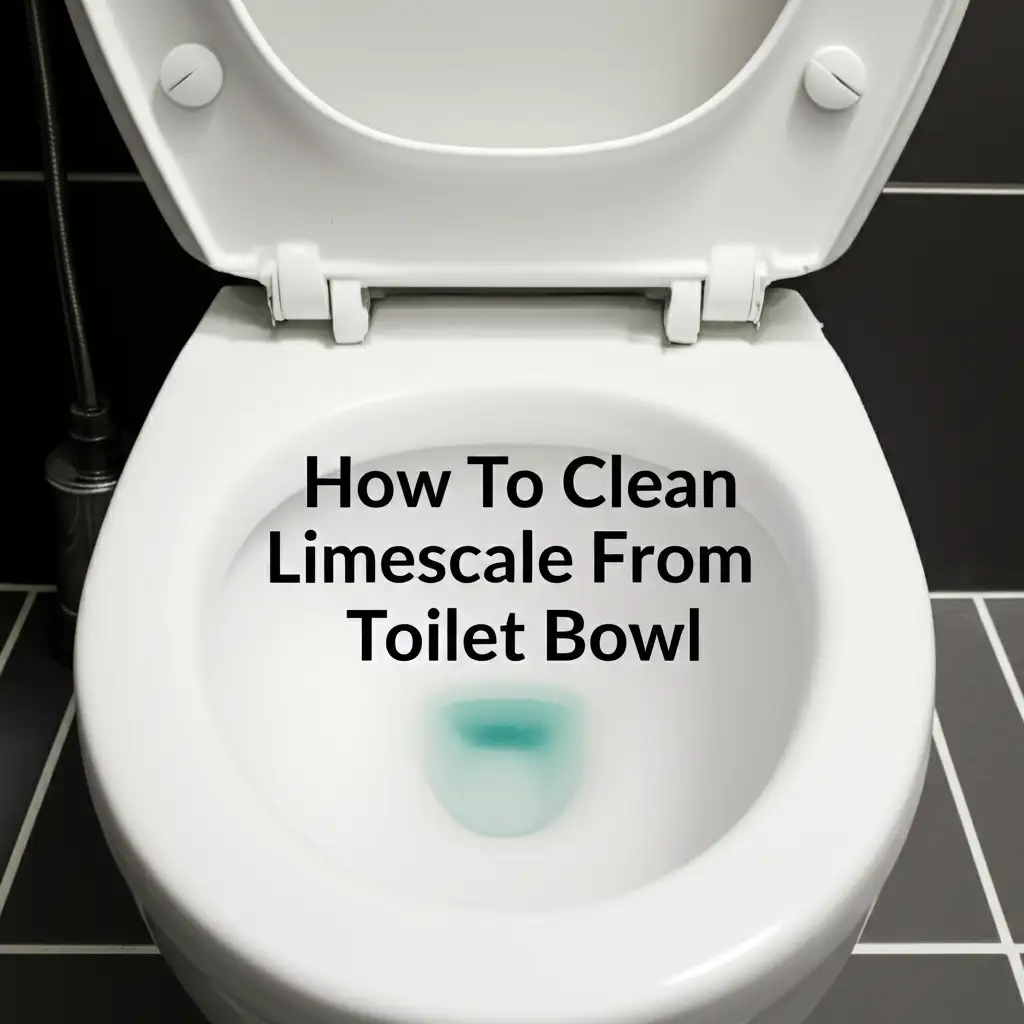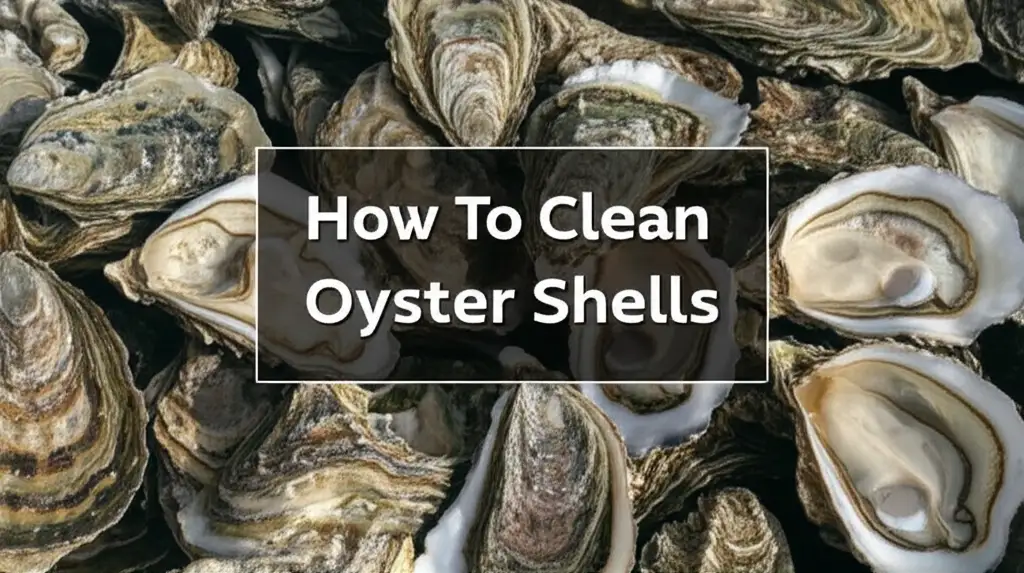· Home Cleaning · 17 min read
How To Clean Maggots From Trash Can

A Complete Guide to Cleaning Maggots From Your Trash Can
Finding maggots in your trash can is a truly unpleasant discovery. It signals a hygiene issue and creates a very unsanitary environment. No one wants to deal with these squirming creatures. Thankfully, you can effectively clean maggots from a trash can and prevent them from coming back. This guide provides step-by-step instructions. We cover initial removal, deep cleaning, and important prevention strategies. You will learn natural remedies and practical tips to keep your bin clean.
Takeaway
- Quickly eliminate maggots using boiling water or strong solutions.
- Deep clean your trash can thoroughly with soap, bleach, or natural cleaners.
- Prevent future infestations by sealing trash, drying the can, and using repellents.
- Maintain a regular cleaning schedule for your trash can.
To clean maggots from a trash can, first kill the maggots using boiling water, salt, or a strong cleaning solution. Then, empty the can completely. Scrub the interior and exterior surfaces with a disinfectant cleaner. Rinse the can well and allow it to dry fully in the sun to eliminate moisture.
Understanding Maggots and Why They Appear
Maggots are the larval stage of flies, usually house flies or blow flies. They hatch from eggs laid by adult flies. Flies are attracted to decaying organic matter. Your trash can offers an ideal breeding ground. It contains food scraps, moisture, and warmth. This combination provides everything maggots need to thrive.
Flies can lay hundreds of eggs at one time. These eggs hatch quickly, often within 8 to 20 hours. Maggots then begin feeding immediately. They grow fast, reaching full size in just a few days. After this, they move away from the food source to pupate. The pupal stage lasts a few days before adult flies emerge. This cycle can repeat very quickly if conditions are right. An infestation can grow out of control fast.
Flies enter trash cans through open lids or small gaps. Once inside, they find plenty of food waste. This includes meat scraps, fruit peels, and uneaten meals. These items break down and release odors. These odors attract more flies. The moist environment inside the can also helps the eggs hatch. Maggots feed on the decaying matter. This feeding process helps them grow and develop into flies.
Identifying the Source of Maggots
Maggots usually appear due to food waste exposed to flies. An unsealed trash bag or a loose-fitting lid allows flies access. They lay their eggs directly on the food. The warmer temperatures, especially in summer, speed up their growth. Even a small piece of uncovered food can start an infestation.
The Maggot Life Cycle Brief
The life cycle of a fly is rapid. An adult fly lays eggs. These eggs hatch into maggots. Maggots are the feeding stage. They consume organic matter to grow. After feeding, maggots become pupae. Pupae are inactive, transforming into adult flies. The adult flies then emerge, ready to lay more eggs. This cycle can complete in as little as one week.
Preparation is Key: Safety First and Supplies
Before you start the cleaning process, gather your supplies. Protecting yourself is important. Maggots and the waste they feed on carry bacteria. Proper safety gear prevents contact with these germs. You want to make sure you have everything ready. This makes the cleaning process faster and more efficient.
Put on a pair of thick rubber gloves. You should also wear old clothes that you do not mind getting dirty. A mask is helpful to avoid inhaling unpleasant odors. It also protects you from any airborne particles. Having a dedicated scrub brush for trash can cleaning is a good idea. Do not use this brush for other household cleaning tasks. This prevents cross-contamination.
Essential Safety Gear
Always wear protective gloves when handling anything related to trash. Disposable gloves are fine, but reusable rubber gloves provide better protection. If possible, wear safety glasses. This protects your eyes from splashes. Consider wearing a long-sleeved shirt and pants. This offers more skin coverage.
Gathering Your Cleaning Arsenal
You will need several items to clean maggots from your trash can.
- Boiling Water: This is excellent for killing maggots quickly.
- Dish Soap: A strong degreaser helps cut through grime.
- Bleach or White Vinegar: Both are effective disinfectants. White vinegar is a natural alternative. You can learn more about how to clean with vinegar and baking soda here.
- Strong Scrub Brush: A stiff brush helps remove stuck-on residue.
- Hose with Good Water Pressure: For rinsing the can thoroughly.
- Bucket: For mixing cleaning solutions.
- Paper Towels or Old Rags: For wiping and drying.
First, take the trash can outside. Find a spot where you can freely use water and cleaners. A driveway or patio works well. Empty the contents of the trash can into a larger trash bag. Tie this bag securely and place it directly into your outdoor bin if you have one, or set it aside for immediate disposal. Try to avoid letting any maggots fall out during this step.
Eliminating Maggots: Instant Kill Methods
Once you have prepared, the first step is to kill the existing maggots. Several methods work effectively. Choose the one that suits you best. The goal is to eliminate all living maggots before cleaning. This prevents them from crawling away or reinfesting.
Using Boiling Water for Quick Results
Boiling water is one of the fastest ways to kill maggots. Heat water in a large pot or kettle. Carefully pour the boiling water directly over the maggots inside the trash can. Make sure to cover all areas where maggots are present. The heat instantly kills them. You may hear a sizzling sound. The maggots will stop moving almost immediately. Let the water sit for a few minutes. This ensures all maggots are dead. Then, carefully tip the can to pour out the water and dead maggots. Dispose of them appropriately.
Natural Solutions to Kill Maggots
You can use natural solutions if you prefer. These are often safer for the environment. They can be very effective as well.
- Salt: A generous amount of salt poured directly onto maggots dehydrates them. Sprinkle a thick layer over the entire affected area. Wait for a few hours. The salt will draw moisture out, killing them.
- Lime: Garden lime or powdered lime also works by drying out the maggots. Spread it over the maggots and let it sit.
- White Vinegar: A strong solution of white vinegar can kill maggots. Mix equal parts white vinegar and water. Pour this mixture over the maggots. The acidity will suffocate and kill them. This also helps with odor. Vinegar is a versatile cleaner, similar to how it works on glass stove tops.
- Dish Soap: A simple solution of very hot water and a generous amount of dish soap can also suffocate maggots. Fill the can with hot, soapy water. Let it sit for 10-15 minutes. The soap reduces surface tension, causing maggots to drown.
- Bleach Solution: For a more aggressive approach, a bleach solution works. Mix one part bleach with ten parts water. Pour this mixture into the trash can. Let it sit for about 30 minutes. Bleach is a strong disinfectant and will kill maggots. Use bleach in a well-ventilated area. Wear gloves and eye protection. Rinse the can extremely well after using bleach.
- Insecticides (Last Resort): Chemical insecticides formulated for larvae or flies can kill maggots. Follow product instructions carefully. Use these only if other methods fail. They often contain harmful chemicals. Always use protective gear.
After killing the maggots, it is time for a thorough cleaning.
Deep Cleaning Your Trash Can: Erasing All Traces
Killing the maggots is only the first step. You must deep clean your trash can. This removes any remaining eggs, bacteria, and odors. A deep clean prevents immediate reinfestation. It also makes your bin much more pleasant to use.
Begin by emptying the can again. Make sure all dead maggots and debris are gone. You can use a shovel or scoop for this. Rinse the can with a hose. Get rid of any loose dirt or sticky residue. This initial rinse helps prepare the surfaces for scrubbing. High-pressure water helps here.
Scrubbing Away Residue
Now, it is time for serious scrubbing.
Prepare a Cleaning Solution:
- Option 1 (Bleach): Mix one cup of bleach with a gallon of hot water in a bucket.
- Option 2 (Vinegar): Mix equal parts white vinegar and hot water in a bucket. This is a great natural disinfectant.
- Option 3 (Dish Soap): For a less harsh option, mix a generous amount of strong dish soap with hot water.
Scrub the Interior: Dip your stiff-bristled scrub brush into the cleaning solution. Vigorously scrub every inch of the inside of the trash can. Pay special attention to the bottom and corners. Maggot eggs or residue can hide there. Scrub until all visible grime is gone.
Clean the Exterior: Do not forget the outside of the can. Flies can lay eggs on the exterior, especially near the rim or handles. Scrub the outside surfaces. This includes the lid. Ensure all parts are free of dirt and sticky spots.
Rinse Thoroughly: Once scrubbing is complete, rinse the entire trash can. Use a garden hose with strong water pressure. Rinse until all suds and cleaning solution are gone. Make sure no residue remains. Any leftover cleaner can attract pests or leave streaks.
Odor Removal and Drying: After rinsing, it is crucial to dry the trash can completely. Moisture attracts flies and can cause mold. Tip the can upside down or place it on its side. Allow it to air dry in direct sunlight if possible. Sunlight helps sanitize and speeds drying. For extra odor removal, sprinkle baking soda inside the dry can. Let it sit for a few hours or overnight. Baking soda absorbs odors. It works wonders in many cleaning tasks, much like cleaning a shower with baking soda. Then, simply dump out the baking soda.
Natural Deodorizers for Your Bin
Besides baking soda, other natural items can help with lingering odors. Coffee grounds absorb smells very well. Place a shallow tray of dry coffee grounds in the bottom of the can for a day. Charcoal briquettes also absorb odors effectively. Place a few in the can. Even citrus peels like lemon or orange can provide a fresh scent. Remember to remove these items before placing new trash.
A clean trash can smells better and looks better. It also makes it less inviting for future pests.
Preventing Future Maggot Infestations: Long-Term Solutions
Cleaning your trash can is a temporary fix if you do not address the root cause. Preventing future maggot infestations is simpler than cleaning up an existing one. It requires consistent effort and good habits. The key is to make your trash can an unattractive place for flies. You want to deny them food, water, and access.
The Importance of a Tight Lid
A tight-fitting lid is your first line of defense. Flies cannot lay eggs on trash they cannot reach. Always ensure your trash can lid closes completely. Check for cracks or damage in the lid. Replace damaged lids quickly. If your outdoor bin has a loose lid, consider adding a bungee cord. This keeps the lid secure.
Sealing Trash Bags
Do not just toss loose trash into the can. Always use durable trash bags. Tie them securely before placing them in the bin. Double-bagging smelly or wet items can offer extra protection. This prevents leaks and keeps odors contained. Maggots cannot infest sealed bags easily.
Regular Maintenance Schedule
Consistency is key for a clean bin.
- Empty Frequently: Do not let trash sit for too long, especially during warm weather. Empty your trash can regularly. If you have smelly food waste, empty it daily. This removes the food source before flies can lay eggs.
- Rinse Regularly: Give your trash can a quick rinse every time you empty it. Even a quick spray with a hose helps remove food residue. This prevents buildup.
- Deep Clean Routinely: Plan for a deep clean every few weeks or once a month. This is especially important in summer. A routine deep clean catches any potential problems early.
Drying Out the Can
Moisture attracts flies and creates a breeding ground. After cleaning, always ensure the can is completely dry before placing a new bag inside. You can let it air dry in the sun. You can also wipe it down with an old towel. A dry can is less appealing to flies.
Natural Repellents for Your Bin
Certain natural items can deter flies and maggots. Place these items at the bottom of your trash can or sprinkle them in.
- Salt or Diatomaceous Earth: Sprinkle a layer of salt or diatomaceous earth at the bottom of the can. These absorb moisture. They also dehydrate any lingering eggs or larvae. Reapply after each trash removal.
- Essential Oils: Flies dislike strong scents. Dab cotton balls with essential oils like peppermint, lavender, or eucalyptus. Place these in the bottom of the can. Reapply weekly.
- Bay Leaves: Scatter a few bay leaves at the bottom of your can. Flies are repelled by their scent.
- Cat Litter: A thin layer of unused cat litter can absorb moisture and odors. This makes the can less attractive to flies. Maintaining cleanliness, like cleaning the inside of shoes, also prevents odors.
- Newspaper: Layer newspaper at the bottom of your bin. It absorbs moisture from leaking bags. Change it regularly.
By combining these prevention methods, you create a hostile environment for flies and maggots. Your trash can will stay cleaner and smell better.
DIY Maggot Repellents and Odor Control
Beyond prevention, you can use simple DIY methods to keep flies away. These repellents also help control odors. A good-smelling trash can is less attractive to pests. You can integrate these into your regular cleaning routine.
- Vinegar Spray: Mix white vinegar with water in a spray bottle. Use a 1:1 ratio. After emptying and rinsing your trash can, spray the inside thoroughly. Let it air dry. The vinegar smell deters flies. It also neutralizes odors. This method is safe and effective.
- Baking Soda Sprinkle: Baking soda is an excellent odor absorber. Sprinkle a layer of baking soda at the bottom of your clean, dry trash can before adding a new bag. You can also sprinkle some directly onto the trash inside the bag if it contains smelly food. It helps absorb moisture and neutralize acids.
- Citrus Peels: Save citrus peels from oranges, lemons, or grapefruits. Place them at the bottom of your trash can. The strong citrus scent is pleasant to humans but off-putting to flies. Replace them every few days for continued effectiveness.
- Essential Oils: Flies dislike the strong scent of certain essential oils. Peppermint, lavender, eucalyptus, and citronella are good choices. Put a few drops of your chosen oil on a cotton ball. Place the cotton ball inside the trash can. Renew the cotton ball weekly. You can also mix essential oils with water and spray inside the can.
- Coffee Grounds: Used coffee grounds are good for odor absorption. They also repel flies. Let used coffee grounds dry out completely. Then, sprinkle a thin layer at the bottom of your trash can. You can also put them in a small sachet bag. Replace them regularly.
- Activated Charcoal: Activated charcoal is a powerful odor absorbent. Place a few charcoal briquettes or a charcoal bag inside your trash can. It pulls odors from the air. This makes the bin less attractive to flies.
Using these DIY repellents adds an extra layer of protection. They complement your regular cleaning and prevention efforts. They keep your trash can fresh. This makes it a less inviting place for any pests.
When to Call a Professional: Beyond DIY
Most maggot infestations in trash cans are manageable with DIY methods. However, there are times when calling a professional pest control service is the best option. Knowing when to seek help saves you time and stress.
- Severe Infestations: If your trash can has a massive infestation that seems overwhelming, a professional can help. They have industrial-strength products and equipment. These can quickly eradicate a large number of maggots. You might feel uncomfortable handling such a large problem yourself.
- Health Concerns: If you or your family members have health issues, avoid direct contact with pests. Maggots and flies carry bacteria. If anyone in your household has allergies, asthma, or a compromised immune system, it is safer to let professionals handle it. They can ensure the area is disinfected properly.
- Recurring Problem Despite Efforts: You have diligently followed all cleaning and prevention steps. Yet, maggots keep coming back. This might indicate a larger issue. There could be a breeding site nearby that you cannot identify. It could be an open drain, a crack in your foundation, or a hidden food source. Professionals can identify these sources. They can implement broader pest control strategies.
- Pest Control Services: Professional pest control companies offer targeted solutions. They can assess your specific situation. They use effective treatments. These treatments kill existing maggots and deter future pests. They might suggest traps, baits, or chemical applications. They also provide advice on long-term prevention. These experts understand pest behavior. They can help you break the cycle of infestations.
Do not hesitate to call for help if you feel overwhelmed. A professional can provide peace of mind. They ensure your home environment remains hygienic and pest-free.
FAQ Section
Q1: What kills maggots instantly?
Boiling water kills maggots instantly upon contact. You can also use a strong salt solution or a mixture of white vinegar and water. Pouring these directly over the maggots quickly dehydrates or suffocates them.
Q2: Can maggots get into sealed trash bags?
Maggots usually cannot get into properly sealed trash bags. However, adult flies might lay eggs on the outside of the bag if it is not clean. Leaks or small holes in the bag can also allow maggots to enter if the waste is exposed.
Q3: How often should I clean my trash can to prevent maggots?
Clean your trash can thoroughly at least once a month. During warmer months, consider cleaning it every two weeks or even weekly. Regular rinsing after emptying also helps prevent food buildup that attracts flies.
Q4: Are maggots harmful to humans?
Maggots themselves are not directly harmful to humans. They do not bite or sting. However, they carry bacteria from the decaying matter they feed on. This can spread diseases like E. coli or salmonella if they come into contact with food or surfaces.
Q5: Does salt kill maggots?
Yes, salt kills maggots. When you sprinkle a generous amount of salt directly onto maggots, it dehydrates them by drawing out their moisture. This method is effective but may take a few hours to work completely.
Q6: Can I use bleach to clean my trash can?
Yes, you can use bleach to clean your trash can. Mix one part bleach with ten parts water. Pour the solution into the can and let it sit for about 30 minutes. Bleach kills maggots and disinfects the can. Always use bleach in a well-ventilated area and wear protective gloves and eyewear. Rinse the can very thoroughly afterwards.
Conclusion
Discovering maggots in your trash can is an unpleasant experience. However, cleaning them out is a straightforward task. You now know the necessary steps. First, eliminate the live maggots with boiling water or strong solutions. Then, deep clean the trash can completely. This removes all traces of eggs, bacteria, and odors. Finally, implement strong prevention strategies. These steps ensure your trash can remains clean and free of pests.
By consistently tying off trash bags, securing lids, and maintaining a regular cleaning schedule, you can avoid future infestations. Incorporate natural repellents like vinegar, baking soda, or essential oils for added protection. Remember, a proactive approach keeps your home hygienic. It also makes your daily life more pleasant. Take action today to clean maggots from your trash can and keep your space fresh.
- maggot removal
- trash can cleaning
- pest control
- natural cleaning
- home hygiene




